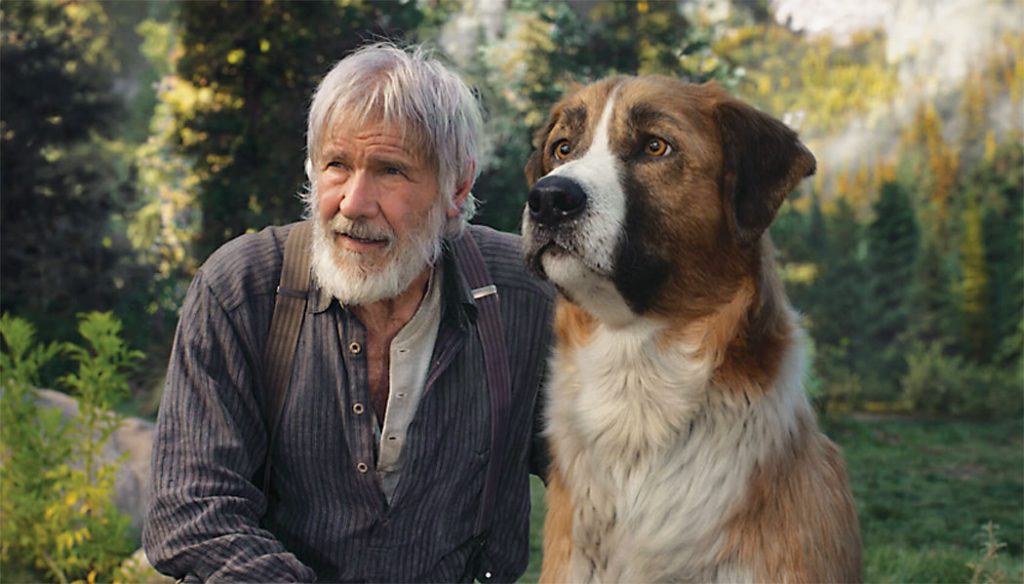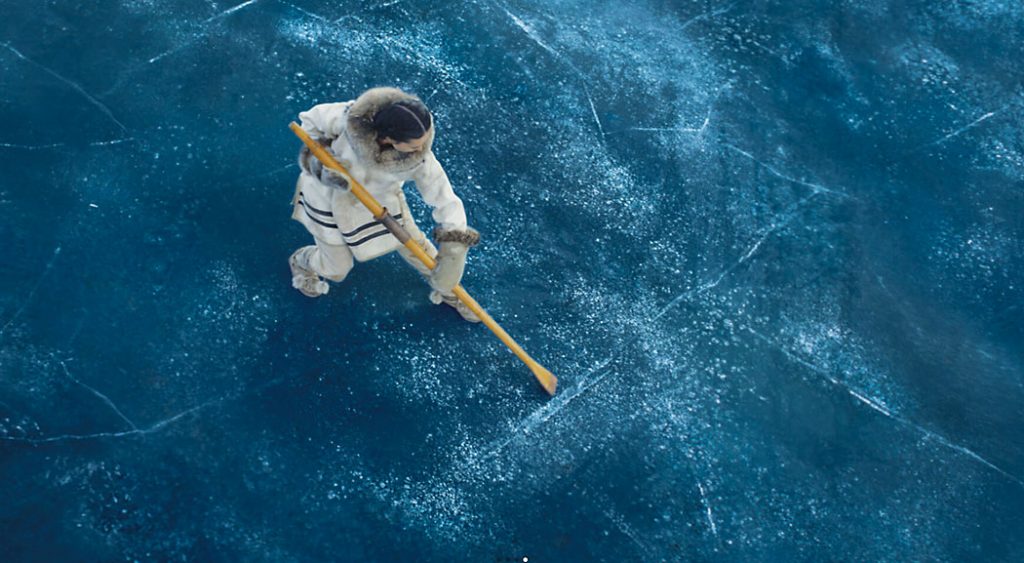
The film The Call of the Wild resembles Jack London’s classic novel very little. That slim, iconic novel, published in 1903 (which you may have read in high school), was searingly memorable. In simple, direct prose it featured the taut, fierce, evocative story about a dog named Buck who survives various travails to end up in the wilds of Alaska as the devoted companion to a rugged adventurer and frontiersman.
The original tale ends violently on a brooding, haunting note. This film is more of a touchy-feely, warmhearted Disney-esque version of the book (although, be warned, it’s still not suitable for young or sensitive children).
Harrison Ford plays John Thornton, a curmudgeonly loner who’s living in the wild to escape personal tragedy. The dog Buck is a CGI creation who exhibits all the cuteness, affectionate nature, and soulful eyes appropriate for a family film. There are gorgeous shots of snowy forested vistas, soaring mountains, roaring streams, and many wild animals—but, in fact, most of the movie was shot on set in Hollywood, and CGI is responsible for most of what you see.

Other characters include Bradley Whitford (The West Wing) as the judge who is Buck’s first owner, Omar Sy and Cara Gee as a pair who deliver mail by dogsled, and Dan Stevens (Downton Abbey) as a greedy city slicker searching for gold.
Jack London was himself a traveler and wilderness adventurer, and in his novel he lays out an existential quest to survive and find meaning in the indifferent, brutal crucible of the untamed wilderness, where courage and toughness are required to face mortal danger both in nature and in human nature.
The “call” of the wild in his book represents something primal in the blood that is antithetical to human civilization, a call that confers exhilarating, unbounded freedom on the spirit that heeds it, but at the expense of any kind of normal life or attachments. This movie, on the other hand, celebrates attachments and the civilizing influence of the heart, highlighting love and loss in a very sentimental way.
If you want a feel-good movie that features humor, heart, and heroism as embodied in a CGI dog and a famous movie star, this is a good choice . . . but you won’t find anything close to the depths found in London’s book.
